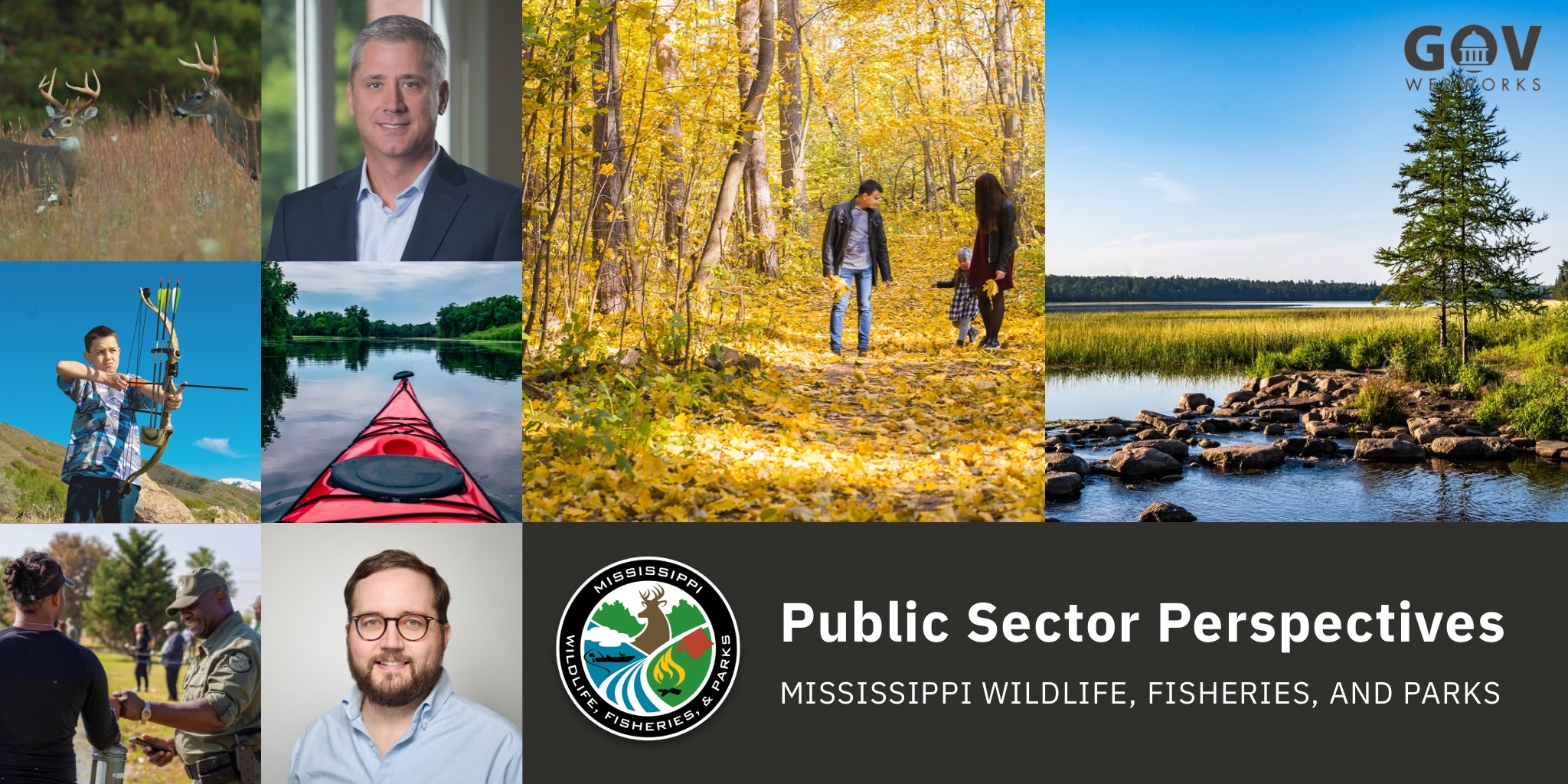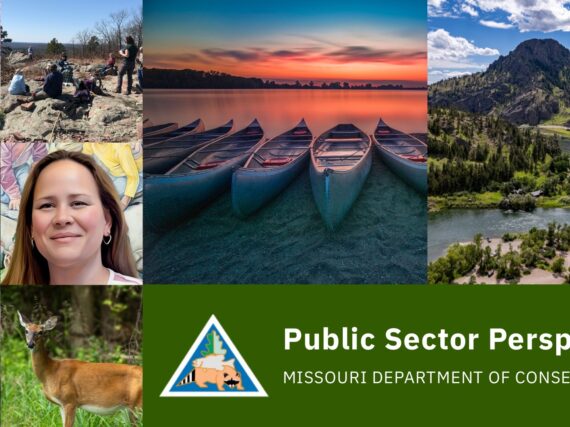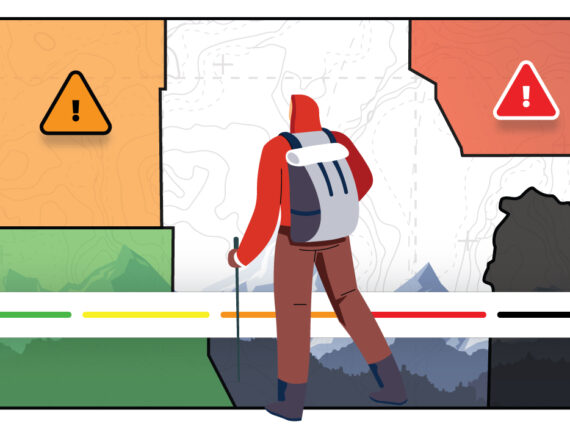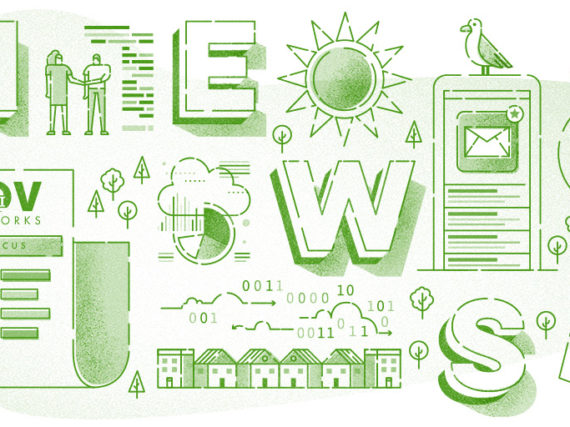Marketing plays a crucial role in communication for state conservation and recreation agencies. No matter how well-designed a website is, a strong marketing plan is needed to ensure content reaches the right audience and achieves desired results. We spoke with the Mississippi Department of Wildlife, Fisheries, and Parks (MDWFP) to learn more about their marketing strategies for their new website developed by GovWebworks.
Jeremy Bass is the Director of Marketing and Communications at MDWFP, where he leads a team of professionals working across multiple platforms to promote conservation awareness in Mississippi. Chip Ward, with a background in journalism and digital media, serves as the Multimedia Specialist Supervisor. He manages the website content, YouTube channel, and podcast, ensuring consistent brand messaging.
“It’s essential for conservation agencies like ours to take marketing seriously,” Jeremy says.
“Especially since fewer people are enjoying the outdoors, particularly in other states. Mississippi has remained more natural and wild, which has become a major draw. While hunting and fishing license sales have fluctuated nationwide, we’re seeing increased interest here.”
In this Public Sector Perspectives interview, Jeremy and Chip share their strategies on marketing for state conservation and recreation agencies.
What does your marketing strategy look like?
Jeremy: Our guiding principles are conservation advocacy, education, engagement, and awareness. Based on leadership’s overall strategy, we develop marketing and media objectives around these principles.
For instance, when Mississippi passed a law allowing hunters to wear blaze pink in addition to blaze orange, we created an engagement campaign that included a partnership with the American Cancer Society and a photo op with legislators. This campaign addressed advocacy, awareness, engagement, and education—covering all our guiding principles.
Our approach is integrated—everything we produce is interconnected. If Chip works on a podcast, assets from it are used across social media, our magazine, and even PR. We avoid silos; everyone collaborates to produce what’s needed.
Chip: Marketing interacts with every department in the agency. It’s a constant process of managing priorities throughout the year and maintaining good relationships across the agency.
What marketing materials do you use?
Jeremy: Our marketing materials include a website, blog, printed magazine, public broadcasting TV show, podcast, and newsletter we send to all license holders. We also have many outreach campaigns that target specific initiatives focused on our agency goals.
Chip: The website is the core of our strategy—it’s the go-to place for updated information.
Our podcast, TV show, digital campaigns, emails, and mobile apps all drive traffic to the website, where we have a closed-loop tracking system.
Social media amplifies this content. We consistently share highlights from our blog, magazine, podcast, and YouTube series, which helps grow our channels.
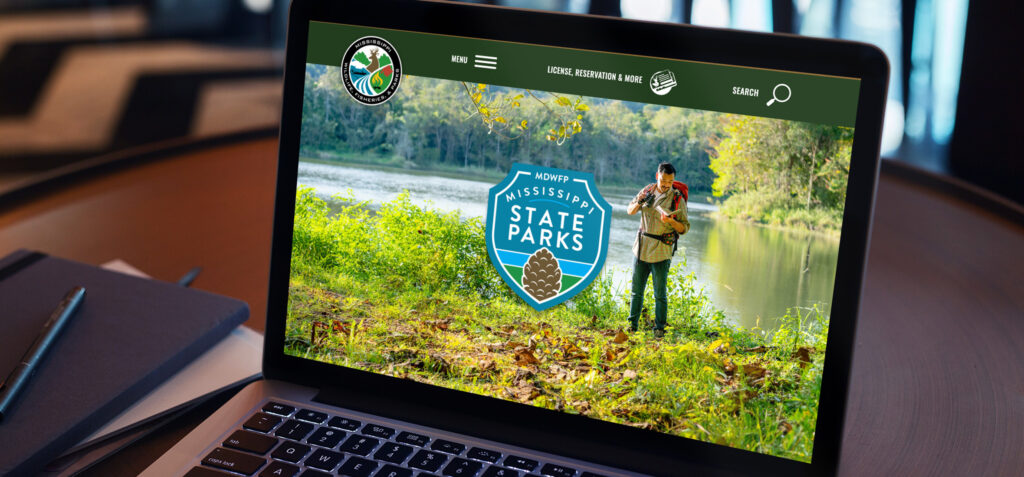
What does the MDWFP marketing department look like?
Jeremy: Our marketing department has 12 key people who produce high-quality content. The Mississippi Outdoors TV team, including Chip, has four. We also have a magazine editor, two graphic designers, a social media coordinator, two marketing specialists, a marketing manager, and a PR and internal communications coordinator who liaises between legislators and our executive team and bureau directors.
Chip: We try to handle all creative work in-house.
We have people focused on each key area, wildlife and fisheries, parks, the museum, licensing, and law enforcement. We divide tasks but regularly come together to tackle priorities and work as a team.
What topics are most important to your mission?
Jeremy: Conservation is central to the MDWFP mission. We aim to make the outdoors, as a whole, somewhere that people want to enjoy, whether that’s a park or a wildlife management area or a state lake. Even though we are a state agency, we’re primarily funded by license sales and federal funds through the Pittman-Robertson Wildlife Restoration Act. When someone buys ammunition or a firearm, a portion of federal tax revenue is distributed to states for conservation based on the state land mass and the number of hunting and fishing licenses. A 5% increase in license sales can significantly impact our budget because it also increases the federal funding.
We do get grants and some capital funding from the state, but the majority of our funding is from license sales and the Pittman-Robertson Act, so hunting and fishing outreach is important.
What do the stats say?
Jeremy: About 19% of Mississippians aged 16 to 65 hold a hunting or fishing license, a strong statistic compared to other states.
About 55% of that age group enjoys outdoor activities in general, such as birding and gardening, so we’re trying to engage the 36% in the middle to learn more about what MDWFP has to offer.
Do you have a growth goal to reach?
Jeremy: One of the big objectives is what they call the R3 initiative—recruitment, retention, and reactivation. The same percentage of residents have been buying licenses in Mississippi for decades. What’s been fluctuating is non-residents. However, we have a limited resource in Mississippi, limited land, deer, turkey, campgrounds. So it would not behoove us to go out and get 100,000 more hunters to come here. The license costs would skyrocket and the resources available to hunters and anglers could become stressed.
Instead of pushing to get more hunters, which could strain our resources, we’re taking a different approach. Producing quality creative work is key to delivering the right message that retains and grows our audience in a sustainable way.
What are your retention strategies?
Jeremy: We focus on what matters most to people (audience-centric approach), while keeping a consistent message and look across all platforms (brand integrity). By using data and feedback, we make sure our content is engaging and effective (data-driven creativity and storytelling).
We work closely with wildlife experts to create accurate and interesting campaigns that promote conservation and outdoor fun, helping people stay connected to Mississippi’s natural resources.
Which parts of your website get the most visits?
Jeremy: Website traffic depends on what is in season. Most visitors come to buy hunting or fishing licenses or reserve campsites. Fishing reports are also popular—North Mississippi has some of the best crappie fishing lakes in the world.
Chip: I just pulled the analytics to see what our top 20 pages are and like Jeremy said, it’s very seasonal.
Right now, with hunting season approaching, people are checking hunting licenses, bag limits, wildlife management areas, and regulations.
We’ve made it easy to answer any hunting-related questions with just a few clicks.
Jeremy: We want the website to be a quick tool. Visitors should be able to find what they need in three seconds. We surveyed our customers during the development of the new website to ensure the site meets their needs, which change seasonally. We also designed it to be modular, allowing us to update it easily as audience needs evolve.
What does your podcast cover?
Chip: Mississippi Outdoors Podcast features employees, partners, and “Mississippi-famous” figures, and we cross-promote our content on social media, which boosts our reach.
We’ve had a former NFL player talk about rabbit hunting, roundtables with law enforcement officers, and a former game warden who shared stories from his undercover work. One episode featuring him has over 150,000 views.
Our podcast was also nominated for the People’s Choice Award in the government and organizations category.
What kinds of educational programs do you offer?
Jeremy: The Natural Science Museum is our main educational arm, but we also work with law enforcement’s hunter and boater safety initiatives.
Archery in Mississippi Schools and Mississippi Scholastic Shooting Program are key educational initiatives we have with schools statewide.
Each bureau contributes to our educational initiatives. Our marketing team also has its own initiatives, such as podcast episodes on hunting and outdoor preparation.
Chip: Podcast clips, in particular, have been highly effective—some clips have garnered over a million views. We’re also using short videos to engage younger audiences, making it easier for them to get involved in the outdoors.
What’s next for your department?
Jeremy: The biggest game changer for us is in data analytics. We’re about to roll out a new CRM system with analytical data that will help us communicate more effectively with our audience. Data shows us what content works for our audience, especially younger folks that are connected to the computer or phone.
By using data to understand our audience better, we can create content strategies that foster emotional connections and make it easier for people to access the outdoors, which is our ultimate goal.
Learn more
- Mississippi Department of Wildlife, Fisheries, and Parks website
- MDWFP website case study
- Contact us to learn more about developing a conservation or recreation website
